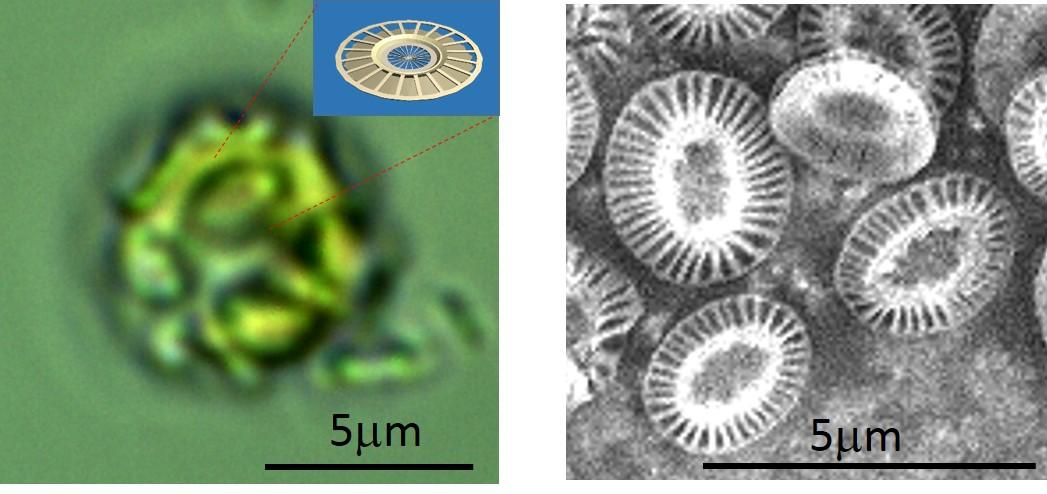Research News
New theory of why microcrystal in algae use light effectively—Application of new technology to direct microcrystals in a magnetic field
Some of the algae have evolved to locate microcrystals on their cellular surfaces, but its purpose is not clear yet. Especially, coccolithophore, a kind of phytoplankton, has been assumed to use the stone for effective photosynthesis function, but there was no scientific approach to prove it due to the technical challenges of experiments. In order to get the evidence of that, it had been highly expected to develop the technology for evaluating the direction dependence in the actual light reflection by the stone.
This time, Professor Yoshihiro Shiraiwa, Faculty of Life and Environmental Sciences at the University of Tsukuba, succeeded in identify the direction of effective light reflection because of the microcrystal stone by the collaboration with Professor Masakazu Iwasaka at Hiroshima University. coccolithophore produces the micrcrystal with its disk form of calcium carbonate.
Algae bioenergy technology would be able to more advanced if scientists clarify the relationship between microcrystal's optical features and biological significance. Moreover, the microcrystal would be applied to biosensor as micro-optic materials.

Coccolithophore phytoplankton Emiliania huxleyi and cell covering crystals of calcium carbonate, coccoliths. The size of coccoliths are 2 to 3 µm in diameter.
Original Paper
Yuri Mizukawa, Yuito Miyashita, Manami Satoh, Yoshihiro Shiraiwa, Masakazu Iwasaka, Scientific Reports, Light intensity modulation by coccoliths of Emiliania huxleyi as a micro-photo-regulator. doi: 10.1038/srep13577(2015)


